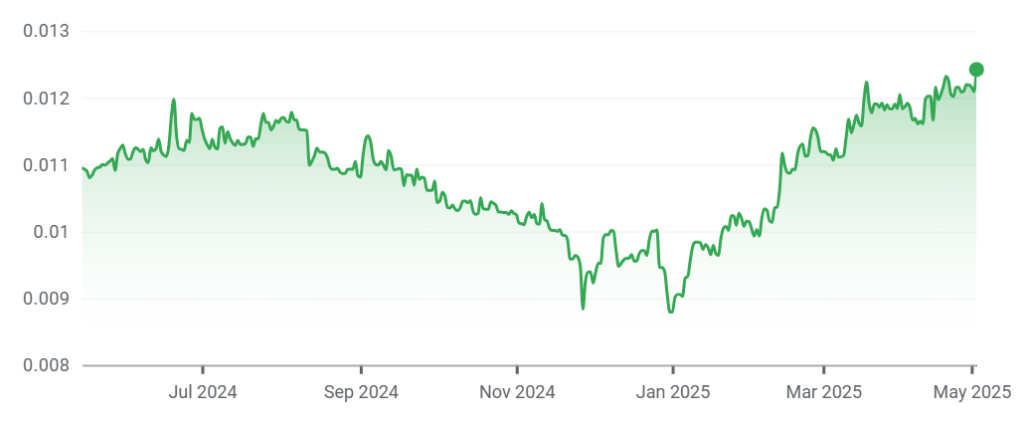Russia’s Digital Ruble Hits Speed Bump—Launch Could Stall Until 2027
Moscow’s CBDC ambitions face delays as economists predict a two-year setback. The Kremlin’s ’blockchain revolution’ now looks more like a slow-motion parade.
Behind the scenes: Bureaucratic hurdles and legacy banking resistance are throttling progress. Meanwhile, Russian citizens keep stacking cash under mattresses—a decentralized solution that’s stood the test of time.
Finance jab: When your digital currency moves slower than SWIFT sanctions, maybe stick to gold bullion and VPNs.
Digital Ruble Rollout: Russians to Wait Until 2027 for CBDC?
Per the state-owned Russian newspaper RIA Novosti, Alexey Voylukov, an MBA professor of business practice in digital finance at the Presidential Academy in Moscow, said that the Central Bank will need to provide incentives if it wants people to use its coin.
 The blackouts across Spain and Portugal are bad news for central bank digital currencies and stablecoins… but good news for cash#CBDCs #DigitalEurohttps://t.co/MTlXFb7fwm
The blackouts across Spain and Portugal are bad news for central bank digital currencies and stablecoins… but good news for cash#CBDCs #DigitalEurohttps://t.co/MTlXFb7fwm
Voylukov also said that in the most optimistic of scenarios, ordinary Russians will be able to start paying in stores with the digital ruble in the second half of 2026.
However, he said that a national rollout in 2027 was “a more realistic scenario.”
Voylukov’s comments came after claims to the contrary last month from the finance ministry. The ministry said the digital RUB was “almost ready” for a nationwide launch.
Earlier, Interfax reported that Russian Finance Minister Anton Siluanov said that the digital ruble would launch next year. The minister said:
“Last year and the year before, we carried out several transactions, including budgetary transactions, using the digital ruble. The digital ruble is 100% reliable.”
Siluanov said that Moscow would focus on the token’s use in the commercial banking sector for the remainder of 2025.
Some 15 major banks, including Sberbank and T-Bank (formerly Tinkoff Bank), are currently testing the token.
However, while Central Bank Governor Elvira Nabiullina has continued to champion the CBDC, the banking sector has expressed grave doubts.

Russians Still Unsure About Digital RUB
Citizens have also expressed their misgivings about the coin, leading the Central Bank to respond with assurances that “nobody will be forced” to use the CBDC.
But the digital ruble’s future was thrown into doubt in late February when Nabiullina announced a “delay.”
Voylukov also opined that most Russians are still very wary about the CBDC. He said:
“Firstly, the digital ruble does not provide any tangible advantages compared to existing means of payment. Secondly, it uses QR codes. This kind of technology requires stable cellular networks and internet connections. This makes payment less convenient and slower compared to regular bank cards.”
Connectivity Problems?
Around 88% of Russian households have internet access, per 2023 data. However, while that figure is much higher in urban areas, some think that it may be as low as 83% in rural parts of the country.
The central People’s Bank of China has attempted to get around similar connectivity issues by launching offline digital yuan wallets.
The European Union will on Tuesday announce a roadmap to phase out the bloc’s remaining gas ties with Moscow, but in the absence of sanctions it will be difficult for buyers to exit gas contracts using legal options such as force majeure https://t.co/PIanL3c5yp
— Reuters (@Reuters) May 5, 2025Russia is yet to pilot similar solutions, but may look to Beijing for inspiration as both nations look for more ways to collaborate in the financial sphere.
Voylukov concluded that it was “most likely” that the digital ruble would “be of interest to people who are already accustomed” to using QR codes and similar solutions to make payments. He said:
“Mass adoption success or failure will depend on what advantages the Central Bank and the commercial banks working with the digital RUB will be able to offer people.”

